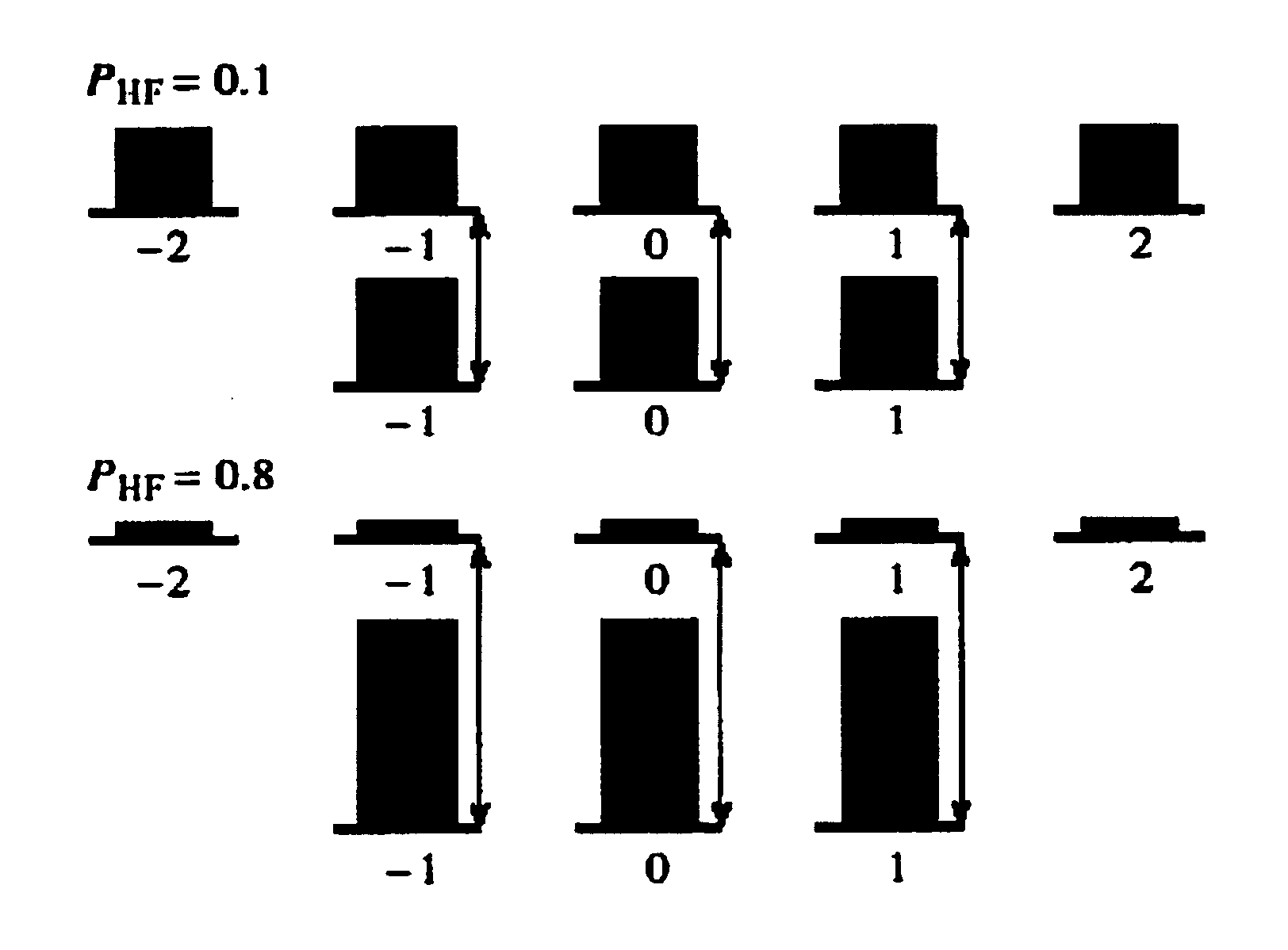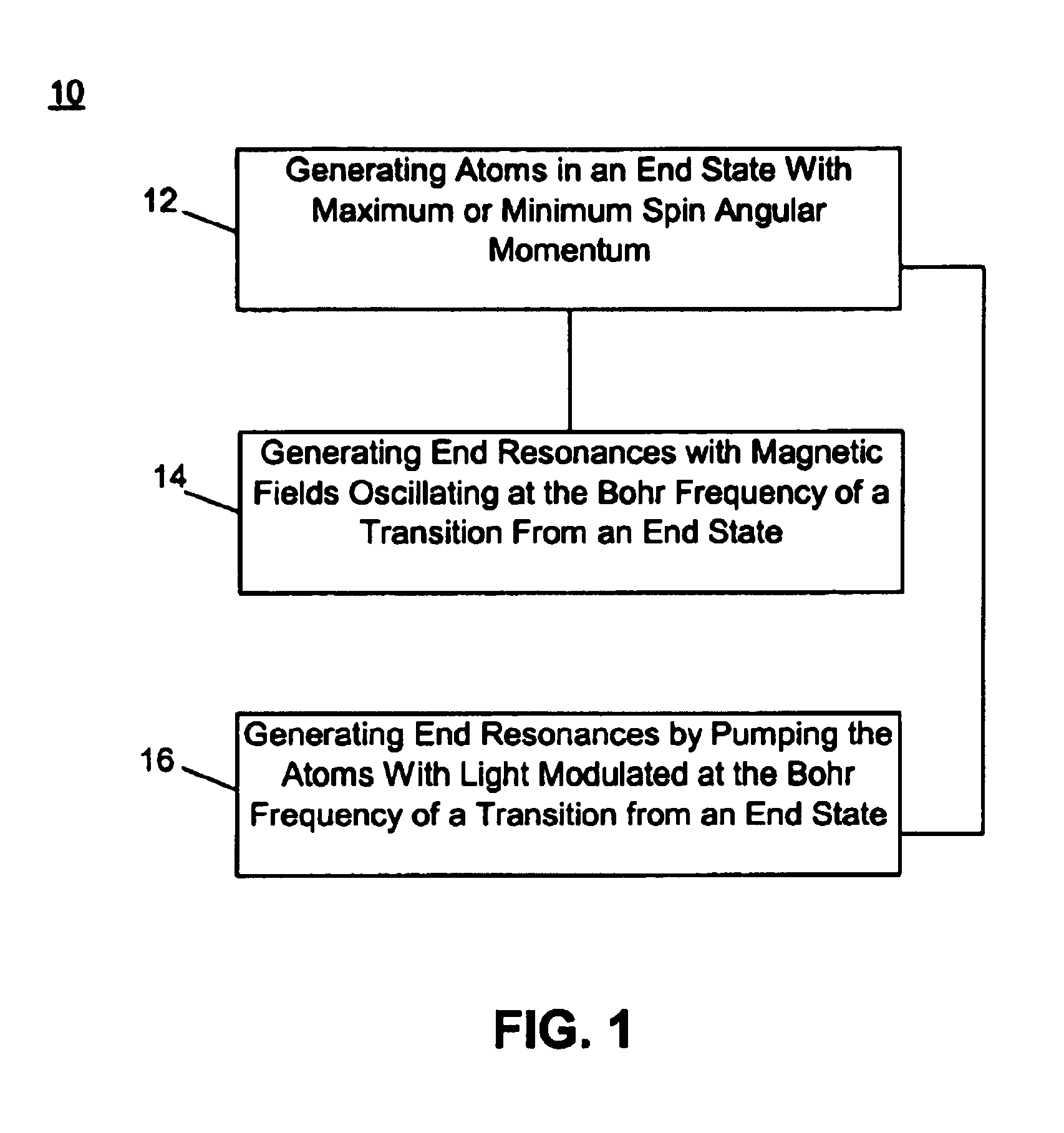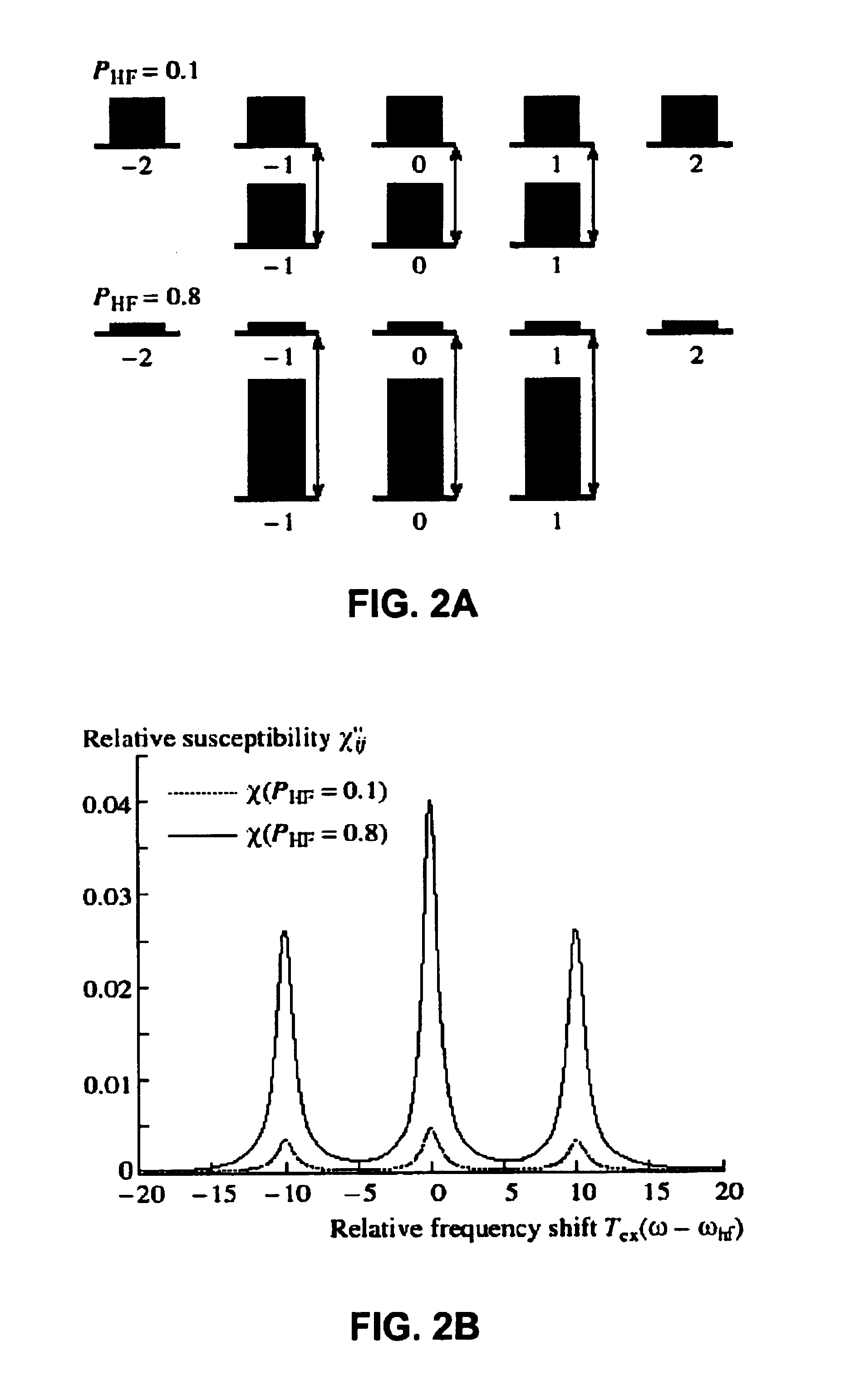Method and system for operating an atomic clock with reduced spin-exchange broadening of atomic clock resonances
a technology of atomic clock and resonance, which is applied in the field of optically pumped atomic clocks or magnetometers, can solve the problems of reducing the size of atomic clocks, reducing the efficiency of atomic clocks, and reducing the number of atomic clocks, so as to achieve high signal-to-noise ratios, conserve spin angular momentum, and increase the effect of signal-to-noise ratio
- Summary
- Abstract
- Description
- Claims
- Application Information
AI Technical Summary
Benefits of technology
Problems solved by technology
Method used
Image
Examples
Embodiment Construction
[0023]Reference will now be made in greater detail to a preferred embodiment of the invention, an example of which is illustrated in the accompanying drawings. Wherever possible, the same reference numerals will be used throughout the drawings and the description to refer to the same or like parts.
[0024]FIG. 1 is a flow diagram of a method of operating an atomic clock 10 in accordance with the teachings of the present invention. In block 12, atoms are generated in an initial state having maximum or minimum spin angular momentum. The quantum numbers f and m are used to label the ground-state sublevels of the alkali-metal atom. Here f is the quantum number of the total spin, electronic plus nuclear, of the atom, and m, is the azimuthal quantum number, the projection of the total spin along the direction of the magnetic field. The possible values of f are f=I+½=a or f=I−½=b, and the possible values of m are m=f, f−1, f−2, . . . , −f For example, for a left end resonance, the initial st...
PUM
 Login to View More
Login to View More Abstract
Description
Claims
Application Information
 Login to View More
Login to View More - R&D
- Intellectual Property
- Life Sciences
- Materials
- Tech Scout
- Unparalleled Data Quality
- Higher Quality Content
- 60% Fewer Hallucinations
Browse by: Latest US Patents, China's latest patents, Technical Efficacy Thesaurus, Application Domain, Technology Topic, Popular Technical Reports.
© 2025 PatSnap. All rights reserved.Legal|Privacy policy|Modern Slavery Act Transparency Statement|Sitemap|About US| Contact US: help@patsnap.com



